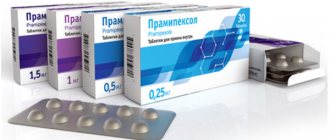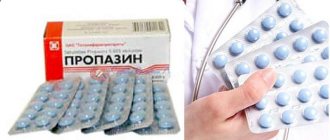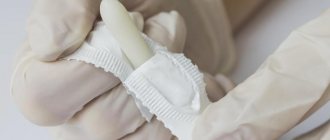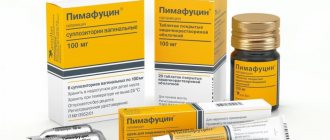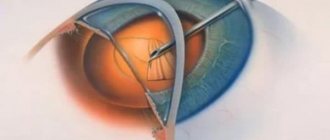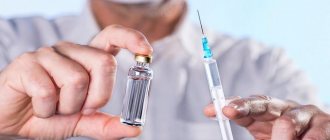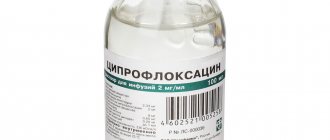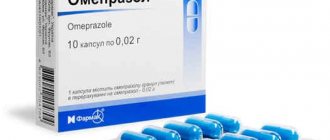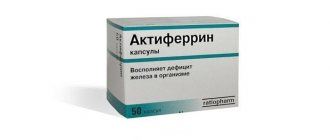Instructions for use of "Bisoprolol"
β-adrenergic receptor blockers (β1-AR) are a large group of drugs that competitively and selectively inhibit the binding of catecholamines to the corresponding receptors.
The latter are proteins of the outer cell membrane that “recognize” and connect the molecules of adrenaline and norepinephrine circulating in the blood. β1-AR are localized on the membrane of the fibers of cardiomyocytes, kidney cells and adipose tissue. The effect on the structures causes an acceleration of the pulse and increased heart contractions, stimulates glycogenolysis (the breakdown of complex carbohydrates) in the liver, and relaxation of the vascular wall of the arteries.
"Bisoprolol" is a new generation drug that dissolves in blood plasma and fat cells of tissues. Excretion of active metabolic products is carried out in two ways: renal excretion and elimination with bile into the intestine.
This feature is one of the advantages of the drug, which allows Bisoprolol to be prescribed to patients with chronic kidney or liver diseases and elderly people. The drug is considered safe for use by patients with type 2 diabetes, as it does not affect carbohydrate and lipid metabolism.
Pharmacokinetic properties:
- More than 90% of the active component is absorbed from the intestinal cavity;
- connection with blood plasma proteins – 28-32%;
- adsorption and bioavailability are independent of food consumption;
- the drug begins to act after 3-4 hours;
- The therapeutic maximum is reached after 10-12 hours and lasts more than a day.
Indications for use
"Bisoprolol" is used in the clinical practice of cardiologists, therapists and endocrinologists. The most common indications for taking the drug:
- hypertension (essential and symptomatic);
- acute and chronic forms of IHD (angina pectoris, myocardial infarction (MI), cardiosclerosis);
- chronic heart failure (CHF) with left ventricular systolic dysfunction (reduced ejection fraction);
- symptomatic treatment of thyrotoxicosis – a pathology with increased synthesis of thyroid hormones;
- hypertrophic cardiomyopathy;
- permanent form of atrial fibrillation, supraventricular (supraventricular) tachycardia.
The goals of prescribing Bisoprolol for acute MI on the first day:
- pain relief;
- limiting the area of necrosis in the muscle;
- prevention of severe arrhythmias;
- reducing the risk of death.
BBs reduce mortality in chronic heart failure and prevent complications from the circulatory system during surgical interventions (coronary artery stenting, bypass surgery).
Mechanism of action
The active substance binds to β-AR and prevents the interaction of catecholamines and the occurrence of cellular reactions. Bisoprolol is a cardioselective drug that selectively blocks β1-adrenergic receptors located in the heart and does not affect the structures of the lung tissue.
The pharmacological effects of the drug are presented in the table.
| Structure | Influence |
| Myocardium (muscular lining of the heart) |
|
| Conducting system |
|
| Coronary vessels |
|
| Kidneys |
|
Consequences of using Bisoprolol:
- reducing energy costs during tachycardia, sympathicotonia - conditions with increased stimulation of adrenergic receptors;
- correction of pathological remodeling (changes in structure) of the myocardium;
- delay or slowdown of cardiac functional failure due to dysfunction of beta-adrenergic receptors;
- decreased sensitivity to adrenaline with a progressive decline in the contractile function of cardiomyocytes.
Composition and release form
The drug is produced in the form of flat white tablets with a beveled edge. The concentration of the active substance (bisoprolol fumarate) ranges from 2.5 to 10 mg, depending on the chosen dosage. There is a dividing strip on the surface of the tablet, which indicates an equal amount of the drug in each half.
The cardboard packaging contains 2-5 blisters with tablets of 10 pieces, instructions for use of Bisoprolol.
Method of administration and dosage in various cases
Basic rules for using the drug: 1 time per day in the morning, without chewing, regardless of food intake, with a glass of water.
The product is incompatible with alcoholic beverages. Concomitant use with alcohol reduces the therapeutic effect and increases the likelihood of adverse reactions.
Arterial hypertension, ischemic heart disease with angina pectoris
Treatment begins with minimal doses and is gradually increased to therapeutic (effective). The target daily amount of Bisoprolol is 5 mg (if necessary - 10 mg).
The daily dosage is selected individually in accordance with blood pressure and heart rate.
CHF with LV systolic dysfunction
For treatment, a combination of Bisoprolol with ACE inhibitors, diuretics and angiotensin-2 blockers is used. Before starting therapy, it is necessary to exclude the possibility of progression of the pathology.
Therapy for CHF involves a “stepwise” increase in the dose of the drug over 3 months. Transition to a higher concentration is allowed if the previous one is satisfactory.
| weeks | Daily dose (mg) |
| 1st | 1,25 |
| 2nd | 2,5 |
| 3rd | 3,75 |
| 4-7th | 5 |
| 8-11th | 7,5 |
| 12th | 10 |
If undesirable consequences of taking the drug or exacerbation of heart failure occur, therapy with Bisoprolol is temporarily discontinued. Treatment is resumed after normalization of the patient's parameters with a minimum dose of 1.25 mg.
Selection of an effective dosage by titration requires constant monitoring by a doctor: the patient is in a day hospital.
Abrupt cessation of taking the drug in case of CHF is accompanied by a risk of progression of circulatory disorders, and in case of coronary artery disease - an increase in the frequency of attacks of chest pain in patients.
Bisoprolol is prescribed with extreme caution to patients with bronchospasm, uncontrolled diabetes mellitus, those on a strict diet, obliterating vascular pathologies and Prinzmetal's angina.
Contraindications
The complex effect of the active substance on organs and tissues is the main reason for restrictions on taking Bisoprolol:
- Uncontrolled circulatory failure (acute or chronic), the treatment of which requires parenteral administration of medications.
- Cardiogenic shock - taking the drug aggravates the patient's condition.
- Conduction disturbance along the atrioventricular connection of 2-3 degrees, with the exception of patients with a pacemaker.
- Sick sinus syndrome is a primary disorder of cardiac automaticity. Taking Bisoprolol is one of the reasons for hemodynamic ineffectiveness.
- Secondary bradycardia, arterial hypotension.
- Uncontrolled bronchial asthma (BA). One of the side effects of the drug is spasm of the smooth muscles of internal organs, which provokes obstruction in patients with asthma.
- Raynaud's disease (angiotrophoneurosis) is a vascular pathology with impaired tone of the smooth muscles of the arterial wall. An additional decrease in pressure is the cause of microcirculation disorders.
- Pheochromocytoma (in the preoperative period).
- Metabolic acidosis.
- Acute and chronic renal failure.
- Hepatic encephalopathy.
- Persistent hypokalemia, hyponatremia.
- Acute glomerulonephritis.
An absolute contraindication to taking the drug is intolerance to Bisoprolol or the auxiliary components of the drug. In other cases, the doctor evaluates the risks and benefits for the person.
Side effects
Undesirable consequences of taking the drug most often occur during induction therapy, are mild and disappear within 10-14 days. Possible adverse reactions during treatment with Bisoprolol:
- slow heart rate, signs of worsening heart failure;
- violation of intracardiac conduction;
- dizziness, migraines, fainting;
- dry eye syndrome;
- bronchospasm in patients with chronic obstructive pulmonary diseases;
- nausea, stool disorders;
- hypersensitivity reaction, urticaria, itching;
- muscle asthenia, cramps;
- reactive hepatitis;
- feeling of coldness, numbness, “crawling” in the extremities, arterial hypotension;
- decreased potency;
- depressive disorders, insomnia, nightmares;
- increased levels of cholesterol, triglycerides, transaminase activity (ALT, AST);
- general malaise, loss of strength.
Violation of the regimen of administration, dosage of the drug, metabolic and excretory disorders are the causes of the development of intoxication. Clinical signs of an overdose of Bisoprolol:
- slow pulse - bradycardia;
- drop in blood pressure, up to collapse, loss of consciousness;
- acute cardiovascular failure;
- hypoglycemic state (more often in patients with diabetes mellitus);
- bronchospasm.
There is no antidote (specific antidote) for acute intoxication with Bisoprolol. Overdose therapy is carried out depending on the symptoms of the disorder.
- intravenous administration of 1 ampoule of 1% Atropine solution;
- infusion of 0.9% NaCl solution and vasoconstrictor drugs (“Adrenaline”);
- administration of 2% Isoprenaline solution;
- diuretics (“Furosemide”, “Veroshpiron”, “Hypothiazide”);
- β2-adrenergic agonists (“Salbutamol”, “Fenoterol”, “Terbutaline”);
- dropper with glucose and Glucagon.
Drug compatibility
Complex therapy of cardiovascular diseases requires the selection of safe combinations to achieve maximum effect. Drug interactions of Bisoprolol with other drugs are presented in the table.
| Concomitant use is prohibited | Careful use recommended |
|
|
Side effects
Negative phenomena from the use of the drug develop relatively rarely, but are pronounced.
It is impossible to predict in advance how a particular patient will react to the use of a medication. This is a strictly individual response of the body. Therefore, you need to look at the situation.
Among the most common side effects from the use of Bisoprolol are:
- Deviations from the nervous system. Headache, inability to navigate normally in space, nausea, vomiting, possible depressive states, increased irritability.
- Heart disorders. Bradycardia, chest pain, shortness of breath, a sharp drop in blood pressure.
- Dyspeptic phenomena. Vomiting, heartburn, belching, diarrhea, constipation, alternating bowel movements, and other similar moments.
- Allergic reactions. Skin rash, urticaria.
- Muscle pain, cramps, especially at night.
- Sweating, sexual dysfunction. Potency.
- There are problems with the eyes: dryness, burning sensation, inflammation of the conjunctiva.
- Shortness of breath, suffocation, bronchospasm. Possible effects on the lungs.
Side effects of Bisoprolol are relatively rare, especially if the course of treatment is chosen correctly. If any unpleasant sensations develop and cause discomfort, you should consult a doctor.
Some undesirable effects disappear on their own after a few days from the start of treatment. In this case, it is possible to continue the course; the body independently adapts to the situation.
Analogues and cheaper substitutes
The original "Bisoprolol" (generic name) is produced in Germany by the pharmaceutical company Merck under the name "Concor". The cost on the Russian market ranges from 130 to 460 rubles per package, depending on the dosage of the drug. Currently, many generics (official substitutes) of medicine with a similar composition of imported and domestic manufacturers are registered.
Analogues of "Bisoprolol":
- Russia - Bisoprolol Astrapharm, Aritel;
- Germany - “Bisogamma”, “Cordinorm”, “Bisocard”, “Bisoprolol” (Sandoz, Richter, Ratiopharm);
- Czech Republic – “Coronal”;
- Slovenia - Niperten, Bisoprolol-KRKA;
- Hungary – “Bidop”;
- Italy - "Biol".
Price for the drug
Russian-made bisoprolol is one of the affordable medications:
- 5 mg tablets 30 pieces cost 65-82 rubles;
- a package of 2.5 mg 30 pieces will cost 59-62 rubles;
- for 30 tablets of 10 mg you need to pay 93-97 rubles.
Imported analogues (Concor, Biol, Bidop) are 2.5-3 times more expensive.
Bisoprolol reduces heart rate because it blocks the stimulating effect of adrenaline on the heart. It is taken under constant monitoring of the rhythm, the drug is discontinued on the recommendation of a doctor with a gradual reduction in dosage.
conclusions
The use of Bisoprolol improves the functional state of the cardiovascular system and prevents the development of stroke and heart attack in coronary artery disease. Correctly selected doses of the drug do not interfere with bronchial patency and respiratory function in patients with obstructive pathology, and do not change the metabolism of glucose and lipids. It is not recommended to self-prescribe or o. Before use, you should carefully read the description of the drug. Clinical practice has confirmed that regular use of the drug according to indications increases the duration and quality of life of patients.
Compound
One Bisoprolol tablet contains 0.005 or 0.01 g of bisoprolol fumarate , as well as auxiliary components: magnesium stearate, colloidal silicon dioxide, crospovidone, corn starch (Amylum maydis), microcrystalline cellulose (Cellulose microcrystalline).
For the manufacture of film coating tablets, the following are used: polyvinyl alcohol, titanium dioxide, talc, macrogol, dyes (iron oxide yellow, quinoline yellow, orange yellow).
Reviews of Bisoprolol
Most often, the topic of drug withdrawal is discussed on relevant forums. Reviews about Bisoprolol left by patients and doctors are mainly related to withdrawal syndrome , which occurs against the background of an abrupt cessation of treatment with this drug.
Particular manifestations of it are increased heart rate and attacks of arterial hypertension . Some patients note that during treatment with the drug their vision decreased .
However, since Bisoprolol is prescribed for a long period of time (for some patients even for life), visual impairment and medication intake may be unrelated phenomena.
Taking Bisoprolol may be accompanied by side effects. Some patients practically do not notice them in themselves, while in others, if you believe the reviews, they are quite pronounced.
In connection with all of the above, neither treatment nor discontinuation of the use of this drug should be an independent decision of the patient. In each specific case, the treatment regimen and dosage regimen are determined solely by the doctor who is caring for the patient.
Contraindications
The use of Bisoprolol is contraindicated in:
- hypersensitivity to the components of the drug;
- hypersensitivity to other β-blockers ;
- acute heart failure (AHF);
- CHF in the stage of decompensation (if the patient requires inotropic therapy);
- shock (including cardiogenic shock);
- syndrome of weakness (dysfunction) of the sinus node;
- pulmonary edema;
- sinoatrial blockade;
- bradycardia (extremely low heart rate, in which the heart rate does not exceed 60 beats per minute);
- 2nd and 3rd degree AV block without pacemaker;
- severe form of arterial hypotension , in which the systolic blood pressure does not exceed 100 mm Hg. Art.);
- severe bronchial asthma;
- noted in the history of COPD ;
- pheochromocytoma (in cases where the patient is not simultaneously prescribed α-blockers );
- poorly controlled diabetes mellitus ;
- metabolic acidosis;
- peripheral circulatory disorders in late stages (for example, with Raynaud's syndrome );
- refractory hypokalemia , hypercalcemia , or hyponatremia ;
- hypolactasia;
- lactase deficiency;
- glucose-galactose malabsorption syndrome.
Due to the fact that there is not enough data on the safety and effectiveness of the drug for patients under 18 years of age, Bisoprolol is not used in pediatrics.
In addition, the drug is not prescribed to patients who are undergoing treatment with MAO inhibitors (with the exception of cases when the patient is prescribed B-type monoamine oxidase inhibitors ).
pharmachologic effect
Bisoprolol (INN - Bisoprolol) belongs to the clinical-pharmacological group “ β1-blockers ”. Its action is aimed at relieving the symptoms of myocardial ischemia (antianginal effect), normalizing the disturbed rhythm of contractions of the heart muscle (antiarrhythmic effect), as well as reducing blood pressure (antihypertensive effect).
special instructions
The drug should be prescribed with caution:
- patients diagnosed with psoriasis , as well as patients whose family history contains indications of this disease;
- with diabetes mellitus in the stage of decompensation;
- patients who are predisposed to allergic reactions ;
- patients whose work requires a high speed of psychomotor reactions or potentially threatens health and/or life (as a rule, the reaction speed may decrease in the initial stages of treatment, when changing the drug, as well as when Bisoprolol interacts with alcohol).
For patients diagnosed with pheochromocytoma , the drug is prescribed only after completing a course of treatment with α-blockers .
Sudden withdrawal of the drug is unacceptable; the course of its use is completed gradually, gradually reducing the prescribed dose (it is considered optimal to reduce it by halving the dose daily).
Interaction
Inadmissible combinations with Bisoprolol:
- Floctafenine;
- Sultopride.
Not recommended combinations:
- with calcium antagonists;
- with antihypertensive drugs , which are characterized by a central mechanism of action;
- with MAO inhibitors (except for MAO-B inhibitors).
The drug is prescribed with caution with:
- antiarrhythmic drugs class I and III;
- calcium antagonists , which belong to the group of dihydropyridine derivatives ;
- anticholinesterase drugs;
- Local β-blockers;
- insulin preparations and oral antidiabetic agents ;
- cardiac glycosides (digitalis preparations);
- anesthetics;
- non-steroidal anti-inflammatory drugs;
- ergotamine derivatives;
- β-sympathomimetics;
- sympathomimetics, which are characterized by the ability to activate α- and β-adrenergic receptors ;
- antihypertensive drugs that increase the risk of hypotension (for example, tricyclic antidepressants , phenothiazines or barbiturates );
- Baclofen;
- Amifostin;
- parasympathomimetics.
Allowed combinations:
- mefloquine;
- corticosteroid drugs.
During pregnancy
Bisoprolol is not recommended for the treatment of pregnant and lactating women. However, in situations where the benefits to the mother potentially outweigh the likely risks to the developing fetus, the drug may still be prescribed.
In exceptional cases, when the medicine is used during pregnancy , it should be discontinued no later than 72 hours before the expected date of birth. Otherwise, there is a high probability of developing hypoglycemia , arterial hypotension , bradycardia , and respiratory depression .
When withdrawal is not possible, constant monitoring of the baby's condition is necessary during the first 72 hours after birth.
If it is necessary to prescribe Bisoprolol to a nursing woman, it is necessary to resolve the issue of stopping lactation .
Overdose
An overdose of the drug is accompanied by the following symptoms:
- severe bradycardia ;
- ventricular extrasystole;
- AV block;
- arrhythmia;
- pronounced decrease in blood pressure;
- HNS;
- cyanosis (blueness) of the fingers or palms;
- difficulty breathing;
- dizzy;
- bronchospasm;
- syncope;
- convulsions.
Treatment involves performing a gastric lavage procedure, taking adsorbent medications and prescribing symptomatic therapy:
- of atropine or epinephrine into a vein for AV block (in some patients, a temporary pacemaker is installed to solve the problem);
- injection of lidocaine for ventricular extrasystole (class IA drugs should not be used);
- moving the patient to the Trendelenburg position when blood pressure decreases ;
- intravenous administration of plasma-substituting solutions (if there are no signs of incipient pulmonary edema ; if this does not give the expected effect, the patient should be administered epinephrine , dobutamine or dopamine in blood pressure );
- prescribing cardiac glycosides , diuretics , as well as glucagon for heart failure ;
- intravenous diazepam for seizures;
- inhaled administration of β-agonists for bronchospasm.
